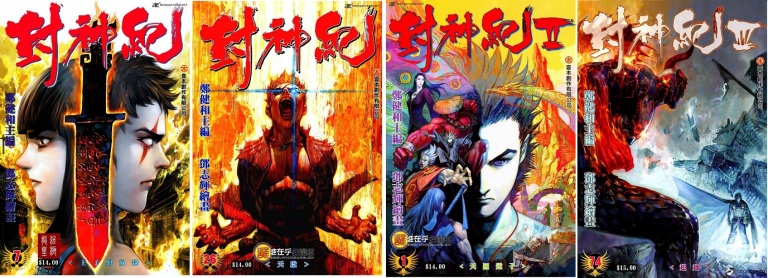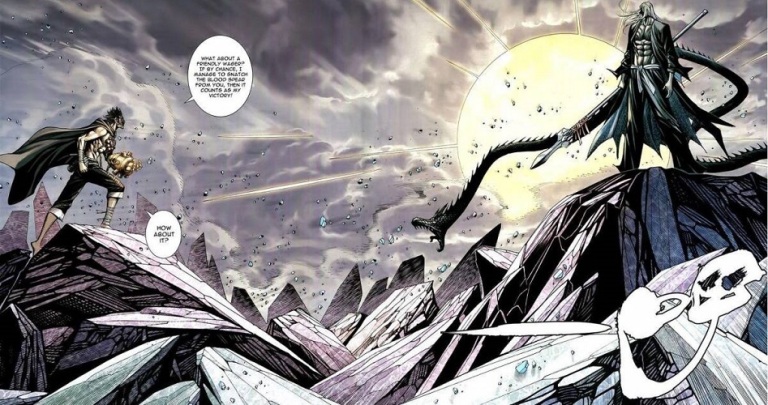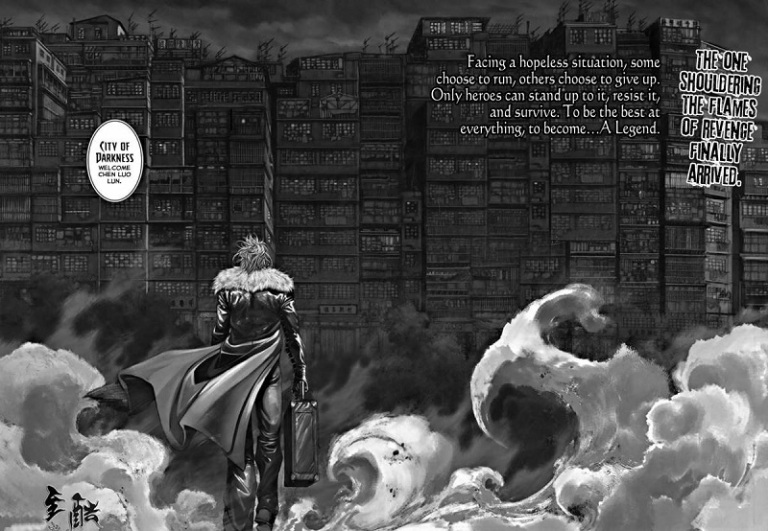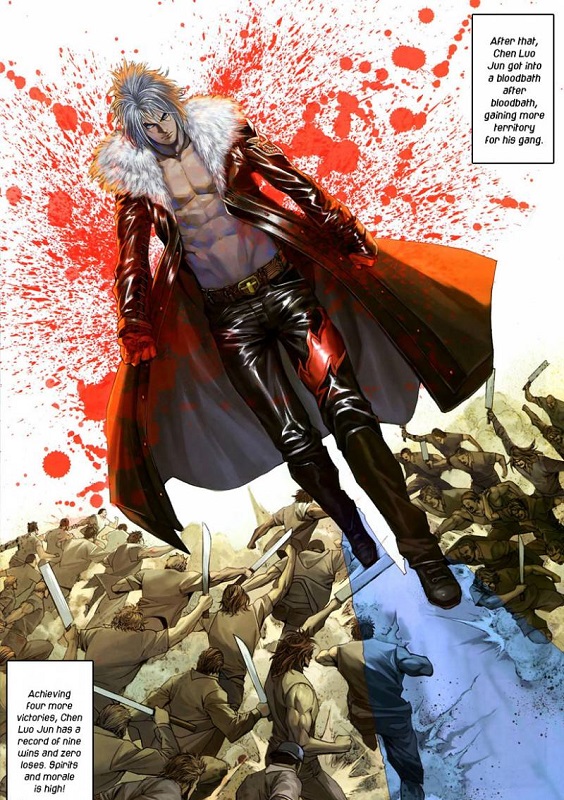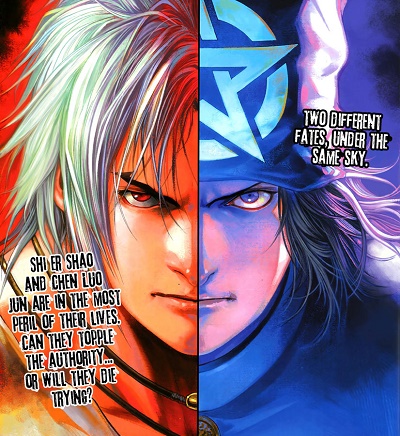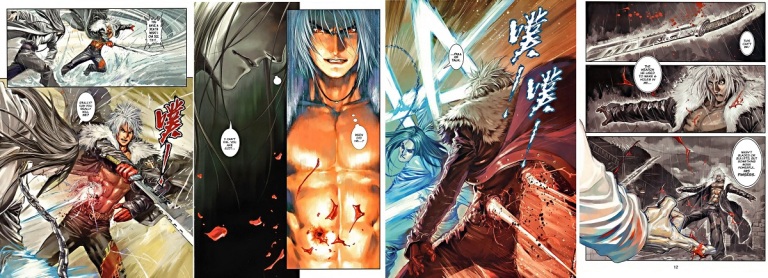More epic than Dragon Ball.
Eons ago the gods created the heavens, the earth, and the realm below. Having set the foundation of the world the ancient god Tian created humans in the image of gods. For centuries the Great Shang dynasty has prospered in service of the gods and relations have been amicable, until now. Emperor Zhou has grown tired of the gods treating human beings as their slaves. While he has great wealth and power, he understands that the gods use prosperity only to train humans as though they were dogs. What Emperor Zhou desires is not more wealth or power, but freedom for all people. When a messenger from gods informs the emperor that Tian wishes for him to conquer and enslave the surrounding kingdoms Zhou doesn't hesitate to express his discontent. He announces he will rebel against the gods and liberate mankind. The heavens have declared that there will be dire consequences for this act of rebellion. In the name of the Shang dynasty Emperor Zhou gives his royal decree - "Just Bring It."
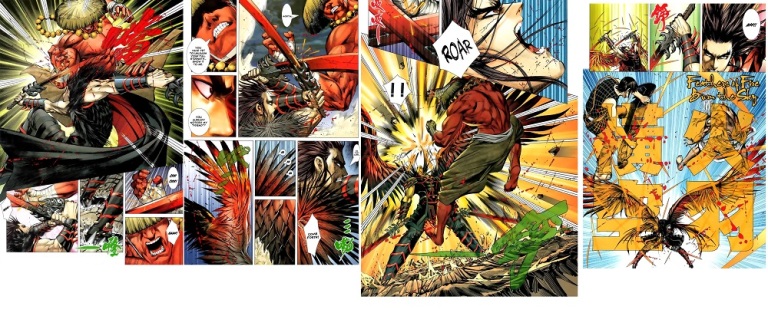
Putting the fear of Man into the Gods.
Emperor Zhou fires the first shot against the heavens and while the gods mock him and regard him as a monkey, they quickly realize the status quo is about to change as Emperor Zhou turns one god into cold cuts and holds his own in a battle against five others - BY HIMSELF.
When Tian descends people die.
He puts so much pressure on the gods that Tian himself has to enter the fray to stop him, bringing Zhou's rebellion to a tragic and bloody halt. This isn't too much of a spoiler, because the story isn't about Zhou. This story is about his son Wu Geng who will later become known as Ah Gou - a legend in his own time.
Savior
I know the term epic has been essentially ruined by pop culture hipsters, but this is one of the few instances where the term is applicable. Zheng Jian He is a superb writer who clearly set out to make
Feng Shen Ji more of a legend rather than a typical comic. This story is so huge that at times it makes Dragon Ball seem small by comparison. The story evolves through numerous plot twists, absolutely mind-blowing battles, and extensive development for its enormous cast of characters. There are all kinds of exotic animals and wildlife, and numerous myths in-universe about martial arts techniques, immortals, and even the origins of the gods themselves. There's even lore surrounding various weapons and locations. This epic tale spans more than 200 chapters and there are some huge plot twists that change the narrative only five chapters in.
Meet your new favorite character.
As mentioned above this is Wu Geng's story. After a series of extraordinary events which I won't spoil, Wu Geng finds himself trapped in the body of a previously dead slave named Ah Gou. This is the same slave who Wu Geng beat and tried to torture prior to the events of the story. Understand that Wu Geng was a terrible child who didn't inherit any of his father's love towards his fellow man. Once a proud and arrogant prince, Wu Geng now finds himself assuming the identity of Ah Gou - a slave and in his mind the lowest of all people. This is a humbling experience that changes him for the better. Wu Geng understands his old life is gone. He fully accepts his new identity as Ah Gou and learns to love and lead his fellow human beings after having suffered as they have suffered.
Step back Goku. Watch out Superman. Ah Gou is coming to town.
Feng Shen Ji follows Ah Gou from childhood, to adolescence and into adulthood so he grows a lot over the course of the story. His development is fantastic largely because he's so different from every other heroic character out there. After losing their parents, anyone else would be motivated solely by revenge and rightfully so. However, as a slave Ah Gou's first priority is survival. As he grows closer to those around him, he becomes less focused on his own survival and more focused on ensuring he's able to free his friends from servitude under the gods. Ah Gou isn't stupid. He's smart Maggle. Smart. Ever the opportunist, Ah Gou uses his captivity to make himself stronger, learn more about the gods and why they need humans to excavate bloodstones, and even work his way into the good graces of his owner so he can sabotage the entire operation. He uses his cunning to stay several steps ahead of his enemies and he ensures the survival of not only himself, but his friends.

To the window! To the wall!
After escaping captivity he trains with powerful teachers and also in solitude. At first Ah Gou can't even throw a punch, but as time goes on he becomes strong enough to do battle with the gods, even trouncing some of them with ease. While the gods initially scoff at him, they come to recognize him as a terrible threat and the Dark Ones - a race long opposed to both gods and humans acknowledge Ah Gou as their equal.
His evolution knows no limits.
Ah Gou is cocky enough to laugh in the face of the gods and he's resourceful enough to tear them from the heavens and take the throne for himself. He's similar to Yusuke Uremeshi, but 100x more badass. Thus he's not your typical, boring shonen character (Naruto, Ichigo, etc.) who always wins all the time in absurd ways. Ah Gou is the embodiment of epic, but he's not a Marty Stu. In a world where literally everyone is a badass and his enemies are the gods themselves, Ah Gou isn't ashamed to ask for help nor is he above using dirty tricks to take down his enemies. Even if said trick involves kidnapping the son of a slave owner to get what he wants. He'll do what he needs to do to get the win and he'll flip-off his enemies while doing it.
And so a child will lead them.
There are times when he lets his power go to his head and his inexperience at life does get him into trouble from time-to-time. There are also occasions where he becomes too cocky and even comes to blows with his uncle Zi Yu - the godslayer. His flaws make him an endearing character because it's his imperfections that make him feel more human. Despite his shortcomings he becomes a folk hero even as a teenager and he attracts followers of different races and species from all over the realms because of his charisma, power, intellect, frank manner, and rather eccentric personality. I could easily spend the rest of this review talking about Ah Gou, but he's just one of many in a manhua overflowing with fantastic characters.
The Dark Generals
The Dark Ones are an ancient race with centuries of bad blood with the gods. Led by thirteen generals who follow the command of Ni Tian Er Xing (far left) the Dark Ones have been looking for an opportunity to emerge from the shadows and take their revenge on the gods. A combination of Emperor Zhou's rebellion and Ah Gou declaring war on the gods brings them out of hiding and they provide a badass boon to mankind's coup d'etat. But don't think they're all on the same side. What's great about these characters is that not all of them get along just because they're from the same culture. The writing is more natural than that. They all have different personalities, beliefs, and feelings towards other races and each other. Many of the Dark Generals are actually enemies whose only reason for teaming up is the destruction of the gods. For example Si Wang Yen Shen (far right) despises the other generals, Er Xing in particular and makes it known that after the war is over all bets are off. Yen Shen also despises Ah Gou and the two have some tense interactions. In addition to having their own myths, the Dark Ones also have different styles of martial arts not seen anywhere else in Feng Shen Ji thus adding another layer of authenticity to their civilization.

They Descend
Don't think of the gods as being specist mind you. While the vast, vast majority of them do regard humans as animals some have different ideas. While none of the gods think humans can ever be equal, some feel that humans should be left to their own devices, others think the humans need to be led, and one god in particular couldn't care less because he just wants to party and hit on hot women. Similar to the Dark Ones and the humans, not all of the gods get along just because of their divine nature. There are differences in their personalities and even status. Also similar to the other cultures we see in this manhua, the gods have their own martial arts never seen in the mortal world and trust me when I tell you that the words "shock and awe" could not be more appropriate. And there are still other races and martial arts the reader encounters in Feng Shen Ji besides the ones I introduced.
The best battles you'll see anywhere.
The battles in Feng Shen Ji are simply mesmerizing. Saying they put DBZ to shame would be an understatement as animating even a handful of them would likely bankrupt a studio. There are your classic speed lines, special moves displayed in giant Chinese characters, entire cities being leveled brick-by-brick as these warriors deliver tremendous blows that shake the heavens and the earth. The battles just get bigger and more epic as the manhua goes on and some phenomenal artwork is on display. Cheng Kin Wo and Tang Chi Fai bring their A-game and firmly establish themselves as the best artists in China. Every fight looks and feels like it's going to be a cataclysmic conflict and it almost always is.
This is going to hurt. A lot.
Some of the fights take their cues from Jojo's Bizarre Adventure where opponents basically try to out-gambit (or out-Joestar) each other. On occasion an enemy will be on the offensive, only for Ah Gou to say "AHA! I knew you'd do that so here is my real plan". To which an enemy will respond, "AHA! I knew that this was your real plan all along and I'm two steps ahead." Only for Ah Gou to finish with "AHA! I've been five steps ahead this entire time." It's awesome in this somewhat absurd, meta-way and it makes for some entertaining fights and reactions from the characters therein.
Siri did it to me again.
The world of Feng Shen Ji is massive and there are numerous moments where the characters themselves are just as amazed as the reader at what they discover. There are legends older than the gods themselves, civilizations even the Dark Ones regarded as mere fairy tales, and the reader bears witness to first contact between cultures. There's more going on in this world than even the characters themselves know about and you learn as they learn.
Uncle BADASS
The central themes of Feng Shen Ji are freedom, responsibility, and family. Regardless of where they're from the majority of the characters want the freedom to live their lives in the way they think will best suit them. Most of the cast has tremendous physical, spiritual, and even political power, but very few use it for the right reasons. The majority of the problems in this manhua stem from an authority figure abusing their power and it's not always the gods. The cast has to learn that if they don't wield their power responsibly they stand a very real chance of worsening the same problems they're trying to solve.
Family
Family also plays a role in Feng Shen Ji. Ah Gou forges a strong bond with his uncle Zi Yu who he sees as a teacher and father-figure. After proving his strength, the Dark Ones come to see Ah Gou as their brother and he is welcomed as one of their own by "most" of them. Ah Gou (and hopefully the reader) learns that blood isn't the only thing that makes a family, but also who you love, honor, and protect.
Ah Gou vs Tian: He will avenge his father or die in the attempt.
As you've probably surmised Feng Shen Ji is a truly epic tale. Any reader interested in this title should take note that it does require a substantial investment of your time. Recall that the story follows Ah Gou from childhood to adulthood and so you won't see any titanic battles for quite awhile. After the introductory chapters, the majority of the first part is Ah Gou developing as a human being not just a fighter. However, once he comes of age and begins to strut his stuff get ready to see some truly awe-inspiring conflicts. With fantastic artwork, superb writing, several plot twists, a great cast of characters and mythic story-telling that makes this world seem alive, Feng Shen Ji is a gripping tale from start to finish. I highly recommend this comic for anyone and everyone interested in a modern myth they won't ever forget.




